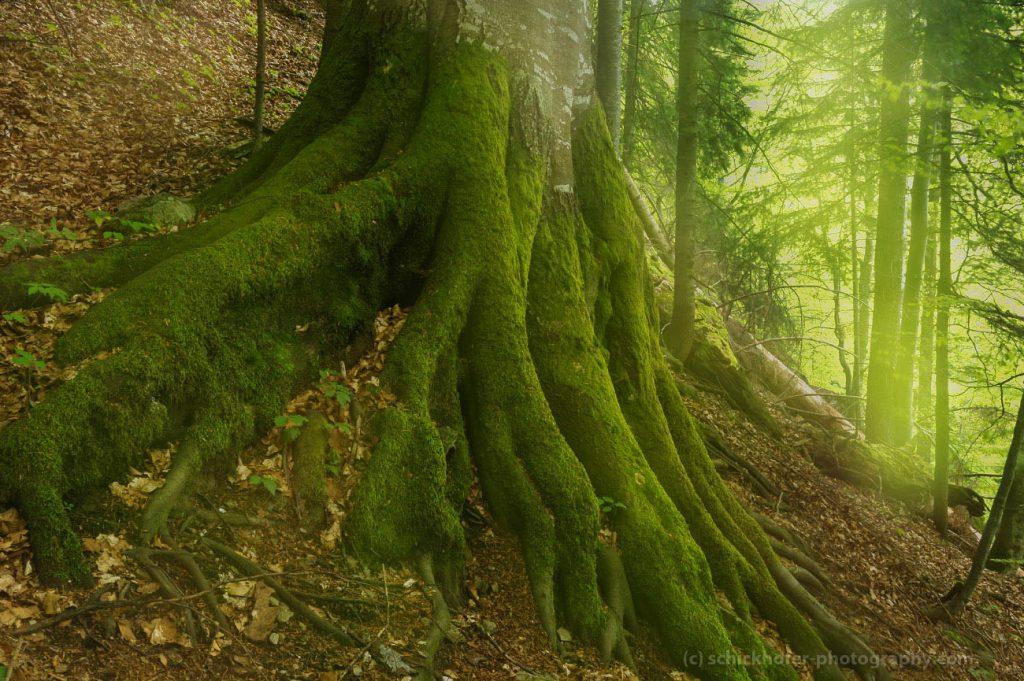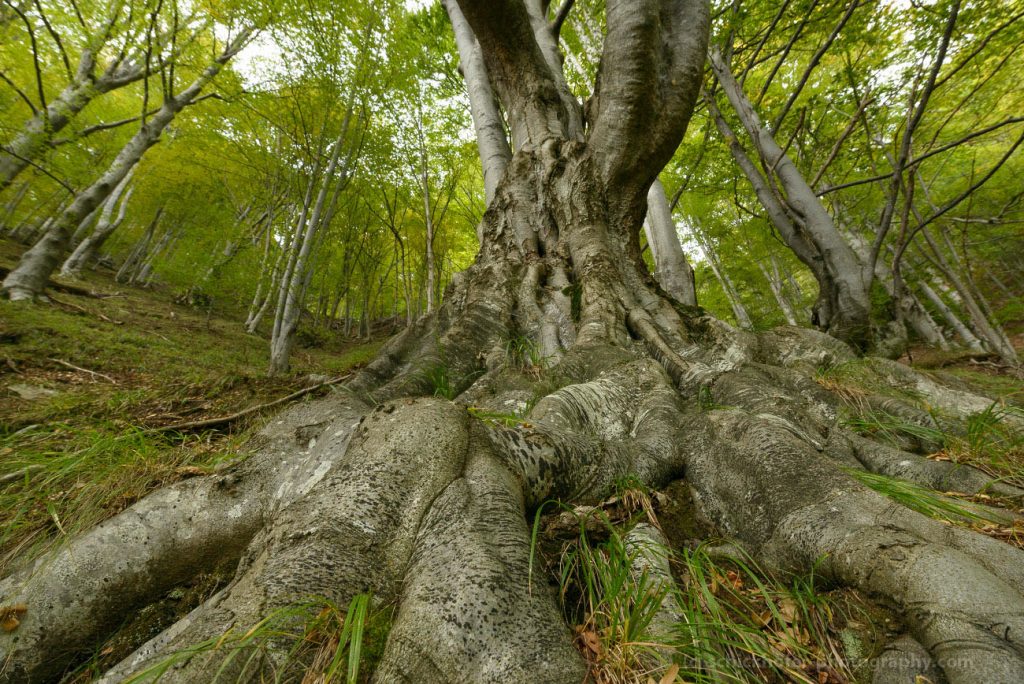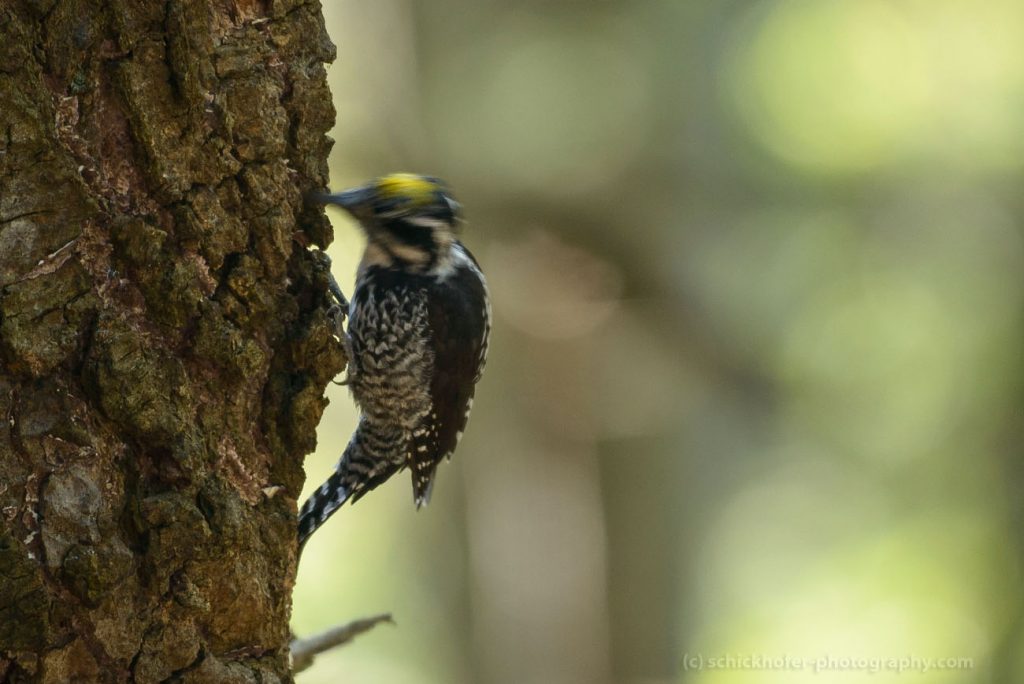A virgin forest is a sacred place, a sanctuary of great beauty. It is a place of immense richness and value to humans and animals alike.
In a pristine, natural forest, trees are not arranged evenly in rows like in many forest landscapes of Europe. Trees and other forest plants are of different ages, heights and sizes. In the alpine regions and on the elevations of the “original Europe”, forests were once dominated by spruce trees, whereas giant beech forests once dominated the lowlands and hilly country, interspersed with fir, ash, maple, elms and oaks.
Virgin forests are full of smells, of mushrooms, wood, foliage, herbaceous plants, earth and mould.
Big and small, young and old, trees and other plants, mosses and grasses of all sizes live side by side and on top of each other; the richness of life in an intact forest is impressive: monumental old trees, ancient moss formations, bizarre constructions, gnarled forms, a virgin forest is dead and alive at the same time.
Standing or lying ‘deadwood’ serves as a source of food and home for many living things such as birds, fungi, insects and microorganisms. Many species can only survive in the last remaining virgin forests of Europe. In these places, there are no natural catastrophes, only perpetual change.

The soils in original forests are critical to the health of a forest, often deep and full of moisture and diversity. Enormous amounts of carbon are safely stored out of the atmosphere in virgin forests and can be released if they are logged or disturbed.
The “Internet of the Forest”
Forests are a connection between the earth and the sky. They consist not only of trees but a vast and complex network of relationships between plants, fungi, soils, insects and animals.
In pristine, natural forests, trees live in symbiosis with so called mycorrhizal fungi, which provide nutrient salts and water, and in return, receive nitrogen and phosphates from the trees. Fungi contribute to the health of a forest, and the less disturbed a forest, the more fungi there is.
Some researches believe that the root systems of trees can almost act like a brain or a nervous system. Information is spread quickly through root and mushroom connections, hence, the concept of the “Wood Wide Web”. Trees exchange information through smells and optical and electrical stimuli, and in primitive forest this fascinating evolutionary system is still intact.

Last refuge for endangered animals
Europe has been almost completely changed by human beings.
Not long ago, much of Europe was covered with natural forests. These forests were home to an incredible abundance of plants and animals that we can hardly imagine today. Today, existing forests represent only tiny fragments of what they used to be. Human activity has left a devastating mark on these once great forests.
Remaining virgin forests are the thin green line, a buffer of protection, between the ongoing survival of some of Europe’s most fascinating wild animals, and their extinction. In ecologically impoverished forests, many plants and animals simply cannot survive. International and national conservation programs, such as the Biodiversity Convention, pursue the goal of re-promoting biodiversity. A key complimentary measure to this is to protect what is left in the first place, and this is why our last primeval forest areas are so important.

